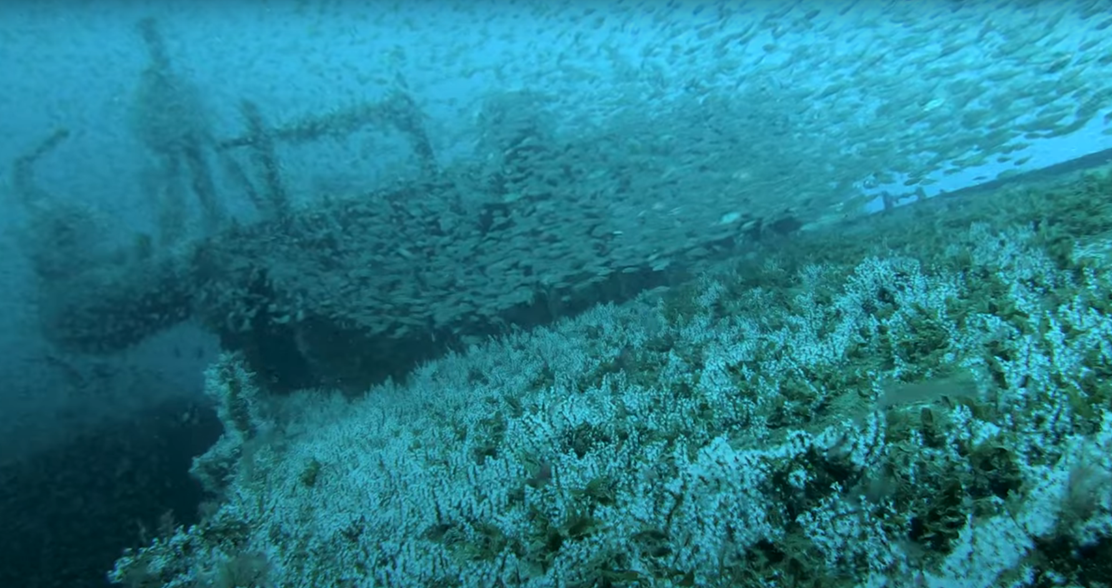NCCOS scientists and their partners found that artificial reef structures with greater horizontal area and vertical relief host more fish than smaller, shorter structures. Also, spatially isolated reef structures tend to have more fish than structures closer to one another.
Structures intentionally sunk to the seafloor that enhance or restore marine habitat are known as artificial reefs. Materials for these reefs range from concrete modules and bridge pieces to decommissioned ships and other vehicles. Identifying which combinations of materials and structures maximize fish populations will help coastal officials improve artificial reef siting and management.
The researchers used multibeam and splitbeam echosounders mounted to the hull of NOAA Ship Nancy Foster to survey 31 artificial reef structures and associated fish across a linear 125-mile region off the coast of North Carolina. The team found that fish density was related to a reef structure’s vertical relief, horizontal area, and isolation. Findings also show that fish density was connected more to a reef’s vertical relief than a reef’s horizontal area. These results suggest that intentional design and spatial arrangement of artificial reefs can strengthen their role as fish habitat.
Project partners included NCCOS, two NOAA Hollings Scholars, North Carolina State University, NOAA’s National Marine Fisheries Service, and The Nature Conservancy.

